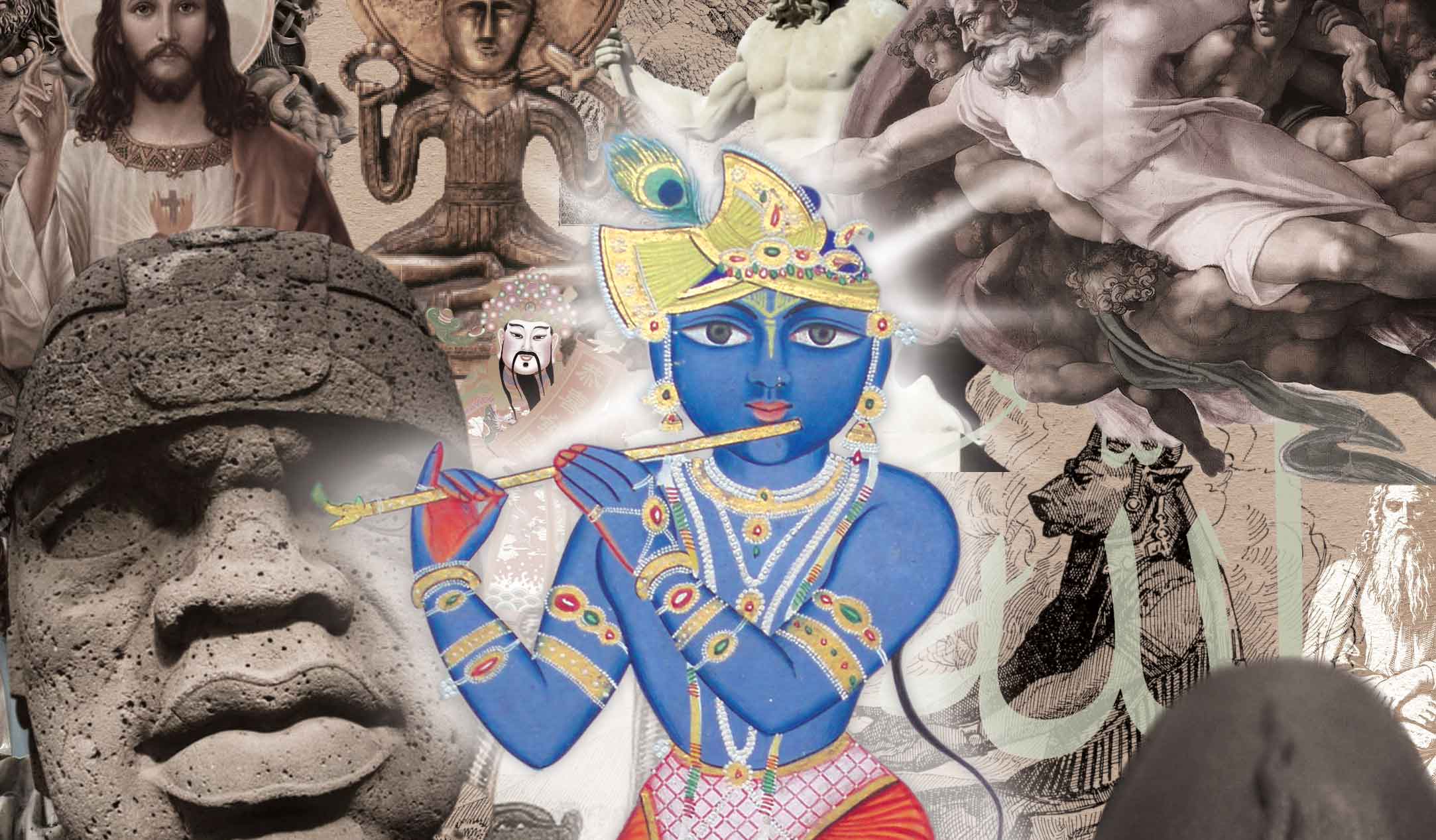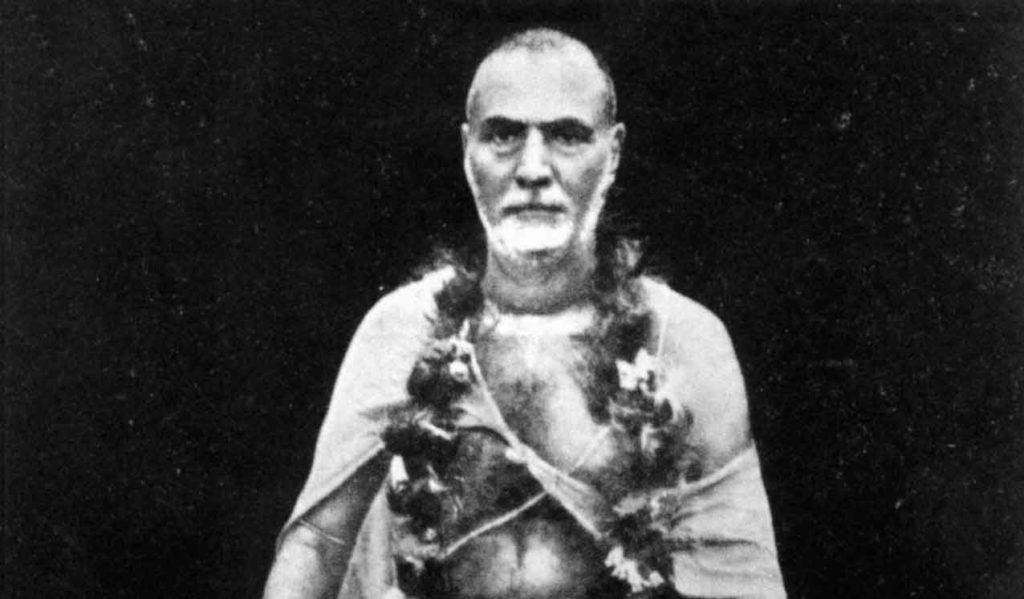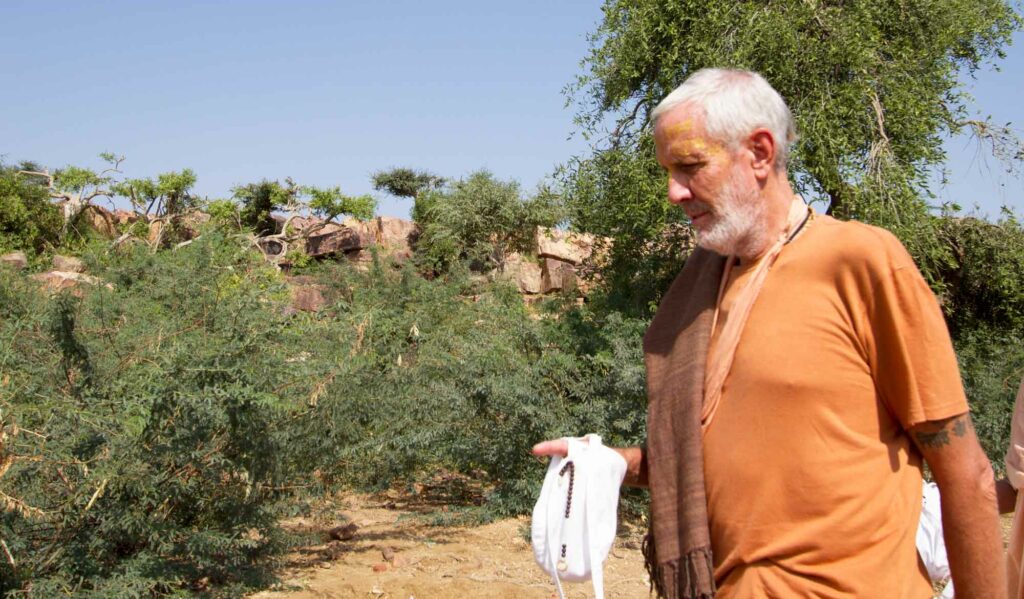Overview
In 'Vaiṣṇavism and Religious Equality' Gaura Gopala Dasa looks at the history of religion and explores the notion that everyone "worships the same God" and points out how the Abrahamic 'God' cannot be the same as the God that is worshipped by Vaiṣṇavas.
History shows us that numerous religions and cults existed throughout the ancient world. Some, such as those of the Egyptians, Greeks, Romans, Mayans, Olmecs, Phoenicians, Babylonians and Assyrians were practiced for thousands of years and affected vast numbers of people. However, they all have one thing in common – they were prevalent for a period of time but ultimately faded away and only exist today in our history books. Despite the predictions of their priests, the fervor of their prayers and the conviction of their followers, they did not carry on into eternity.
At present, the vast majority of theists in the world count themselves as followers of the three Abrahamic religions, Christianity, Islam and Judaism. In relation to some of the religious systems that preceded them, these Abrahamic faiths are still quite young. The oldest of the three, Judaism, was formulated sometime between 400-200 BCE. However, this is very recent in terms of human history on this planet. Arguments to set the roots of these three religions with Abraham (approx. 1800 BCE) and other Old Testament prophets have been disproven by modern scholars due to a lack of any tangible evidence. Despite their claims of being the eternal word of God, these Abrahamic religions, just like their predecessors, can be traced back to a human source. Everything that is born in this temporary world has a beginning and an end. Therefore at some point in the future they will suffer the same fate as all the man-made religions that came before them.
However, long before the Greeks built their temples to Apollo, before the cult of Osiris came into existence, before the Assyrians began their worship of Ashur, the Vedic culture of India was thriving with its timeless system of self-realization. Archaeological evidence has proven the worship of Viṣṇu/Kṛṣṇa predates all known religions of the world. While the man-made belief systems of this world will come and go as they always have, Vedic knowledge comes from an eternal source and thus, will continue to exist in the future.
The Vedas are known as apauruṣeya or untainted by the faulty senses of mortal man. Unlike other religious scriptures, the Vedas are not attributed to any author; they do not point to a higher source of knowledge and their texts have not been altered or revised. Śrīla Vyāsadeva is well known as the compiler of the Vedas in their written form, but he does not claim credit as the author of this vast body of knowledge. This knowledge originates from its eternal source outside of this temporal realm. While the Vaiṣṇavas have put emphasis on certain portions of the Vedas that pertain to self-realization and the worship of Kṛṣṇa, the whole canon of Vedic knowledge is creditable. The core of Vedic literature describes in minute detail the nature of the soul and our eternal relationship with God. Yet we find that the theology found in other religions mainly deals with basic morality and doesn’t evolve beyond that.
Despite all this, some modern practitioners of Vaiṣṇavism (perhaps due to sentimental attachment to previous beliefs) find it necessary to augment their devotional disciplines with practices and ideas from other religions. They feel the need to include such things as Buddhist meditation techniques, alternative readings of the Bible, and studies on the lives of various holy men of other faiths. Beyond this, many Vaiṣṇavas engage in interfaith discourses in order to find similarities between the eternal Vaiṣṇava system of sanātana-dharma and the temporary man-made religions of this world. They hope that such comparisons will accord them broad acceptance in modern society. Yet ultimately, such mundane comparisons are a compromise of faith and will only dilute the essential teachings of sanātana-dharma. Such dialogue can only be maintained on a very superficial level because when one analyses the teachings of these various faiths, any philosophical equality is out of the question. The inevitable result of interfaith discussion will be the practitioner of Vaiṣṇavism trying to equate Kṛṣṇa with the deities worshipped in these Abrahamic religions. After analyzing the nature of these Abrahamic gods, a true Vaiṣṇava would find such comparisons nonsensical at the very least and offensive at best.
Even one quote about the God of Abraham from the books of these religions should be enough to convince any discerning devotee that the sweet personality Śrī Kṛṣṇa is incomparable and cannot be associated with these fabricated deities. For the benefit of the reader we have included a few comparative quotes from the Abrahamic scriptures and the Vaiṣṇava texts.
“From there Elisha went up to Bethel. While he was on his way, some small boys came out of the city and jeered at him. “Go up bald head,” they shouted, “Go up bald head!” The prophet turned and saw them, and he cursed them in the name of the Lord. Then two she-bears came out of the woods and tore forty-two of the children to pieces.” (2 Kings 2:23-24)
In contrast with this contemptible and merciless scenario where ‘God’ sends bears to tear little children to pieces due to the whimsical curse of his servant, the following two quotes are from Vaiṣṇava śāstra regarding the nature of a true devotee of God. Kṛṣṇa does not condone capricious acts of violence and expects His devotees to tolerate all insults and to reject identification with the material body.
ati-vādāṁs titikṣeta nāvamanyeta kañcana
na cemaṁ deham āśritya vairaṁ kurvīta kenacit
“One should tolerate all insults and never fail to show proper respect to any person. Avoiding identification with the material body, one should not create enmity with anyone. (Bhāg. 12.6.34)
śrī-bhagavān uvāca
kṛpālur akṛta-drohas titikṣuḥ sarva-dehinām
satya-sāro ‘nvadyātma samaḥ sarvopakārakaḥ
“The Lord said: O Uddhava, a saintly person is merciful and never injures others. Even if others are aggressive he is tolerant and forgiving toward all living entities. His strength and meaning in life come from the truth itself, he is free from all envy and jealousy, and his mind is equal in material happiness and distress. Thus, he dedicates his time to work for the welfare of all others.” (Bhāg.11.11.29)
“Thou shalt not bow down thyself to them, nor serve them: for I the Lord thy God am a jealous God, visiting the iniquity of the fathers upon the children unto the third and fourth generation of them that hate me.” (Exodus 20.5)
“That the Jewish nation is the only nation selected by God, while all the remaining ones are contemptible and hateful.” (The Talmud, Zohar Vayshlah 177b)
In contrast to the above quotes where God is described as jealous and racist, Kṛṣṇa has clearly stated below that He is impartial, equal to all and does envy any person:
samo ‘haṁ sarva-bhūteṣu na me dveṣyo ‘sti na priyaḥ
ye bhajanti tu māṁ bhaktyā mayi te teṣu cāpy aham
“I envy no one, nor am I partial to anyone. I am equal to all. But whoever renders service unto Me in devotion is a friend, is in Me, and I am also a friend to him.” (Gītā 9.21)
“Lo! Those who disbelieve our revelations, we shall expose them to the fire. As often as their skins are consumed we shall exchange them for fresh skins that they may taste the torment again. Lo! Allah is ever Mighty and Wise.” (Quran 4.56)
roma-kūpa-bhramat-koṭi-koṭi-brahmāṇḍa-maṇḍala
prasūva āgaḥ-sahana jagan-mātar jagat-pitaḥ
“O Kṛṣṇa, millions of universes emanate from the pores of Your transcendental body. O father and mother of the universe, just as a mother tolerates the offenses of her children, You tolerate the offenses of the living entities.” (Kṛṣṇa-līlā Stava 39.154)
These are just a few comparisons to show how dissimilar these conceptions of God are with Śrī Kṛṣṇa. Are these really the words of God? Are these even the words of a civilized nation? Although the Bible states in the Book of Genesis that man was created in the image of God, it would seem from his flawed character that the God of Abraham was actually created in the image of man – a man who is jealous, vindictive, unforgiving, bloodthirsty, racist and genocidal. There are no divine characteristics to be found in him whatsoever. He can only be compared with a malevolent and delinquent child who has been given super powers over mankind.
Is there any comparison to be made with Kṛṣṇa here?
A religion that after thousands of years has not understood the fundamental nature of God does not deserve to stand next to Vaiṣṇavism. Why is there any need to seek acceptance from religions professing to be religions of peace, that have been spread through violence, intimidation and corruption? The practitioner of Vaiṣṇavism has a veritable banquet of spiritual understanding within his grasp – so why should he go grubbing around for nourishment in the dumpster? When one seeks acceptance from these religions it validates their false philosophies and misrepresents the path of sanātana-dharma.
The defining reason why Vaiṣṇavas should maintain their identity separate from other religious beliefs is that Vaiṣṇavas are personalists. The Vaiṣṇava philosophy teaches a message of a personal and individual God who is knowable and captivating. All other faiths, whether it is Christianity, Buddhism, Islam, Judaism, Jainism, Sikhism or Hinduism, teach a non-personal idea of God. To them God is either unknowable, unattainable, one with everything and everyone or simply does not exist. Impersonalism (nirviśeṣavāda) and voidism (śūnyavāda) are the complete antithesis of Vaiṣṇava philosophy. For Vaiṣṇavas to try and find theological similarities and claim that ‘all roads lead to Rome’ is to belittle the teachings and activities of the entire paramparā.
This is not to incite hatred towards people of other faiths but to promote real knowledge and real understanding free from misguided ideas. With such a wealth of knowledge and understanding it is the duty of all Vaiṣṇavas to share this with others. Sharing the knowledge of Kṛṣṇa and showing the example of what the human form of life is meant for is a real example of interfaith relations. The Kṛṣṇa conception is the pinnacle of theism in its purest form. It does not need to be augmented or altered to fit. Without a doubt full satisfaction will be found in the pure teachings of Śrī Kṛṣṇa.
Related Articles
- 📖 Prabhupāda Vijaya (Book)
- Vairāgya Nāṭaka – A Comedy Drama by Śrīla Prabhupāda
- Guru-Bruva (The Pseudo-Guru) by Śrīla Bhaktisiddhānta Sarasvatī Ṭhākura
- Why We Fight by Śrīla Bhakti Gaurava Narasiṅgha Mahārāja
- Māyāvāda and Buddhism – Are They One and the Same? by Swami B.V. Giri
- Advaita Prakāśa Reviewed
- Prabodhānanda and Prakāśānanda by Swami B.V. Giri
- The Self-Defeating Philosophy of Māyāvāda by Gaura Gopāla Dāsa
- Vaiṣṇavism and Religious Equality by Gaura Gopāla Dāsa
Further Reading
- ‘Tattva Sāra’ (A book by a follower of Ramakrishna) by Śrīla Bhaktivinoda Ṭhākura
- Who is a Māyāvādī? by Śrīla Bhaktivinoda Ṭhākura
- A New Gaurāṅga (Nūtana Gaurāṅga) by Śrīla Bhaktivinoda Ṭhākura
- Siddhānta-Ratna – Written by Śrīyukta Upendra-mohana Gosvāmī of Khaḍadara by Śrīla Bhaktivinoda Ṭhākura
- Samālocana (A Book Review) by Śrīla Bhaktivinoda Ṭhākura
- Impersonal Spirituality and Transcendental Spirituality by Śrīla Bhaktivinoda Ṭhākura
- Samālocanā (A Critique of the book ‘Vanamālā’) by Śrīla Bhaktivinoda Ṭhākura
- Bhakti Caitanya Candrikā by Śrīla Bhaktivinoda Ṭhākura
- The Glory of Ārya Dharma Within Pure Sampradāyas by Śrīla Bhaktivinoda Ṭhākura
- Śrī Dayānanda Sarasvatī and the Tantra Śāstra by Śrīla Bhaktivinoda Ṭhākura
Pilgrimage with Swami Narasiṅgha – Part 7: Keśī Ghāṭa
Continuing with our pilgrimage series, this week Śrīla Narasiṅgha Mahārāja takes us to Keśī Ghāṭā where he tells us about Madhumaṅgala’s meeting with the Keśī demon, what Keśī represents, and how Śrīla Prabhupāda almost acquired Keśī Ghāṭa. Mahārāja also narrates his own experience. This article has been adapted from a number of talks and articles by Narasiṅgha Mahārāja.
Prema Dhāma Deva Stotram with the Narasiṅgha Sevaka Commentary – Verses 61-65
In verses 61 to 65 of 'Prema Dhāma Deva Stotram', Śrīla Śrīdhara Mahārāja narrates the pastime of Śrī Caitanya at Caṭaka Parvata In Purī and explains how the scriptures produced by Brahmā and Śiva are ultimately searching for the personality of Mahāprabhu who is merciful too all jīvas, no matter what their social position.
Prabhupāda Śrīla Sarasvatī Ṭhākura’s Visit to Ayodhyā
With the forthcoming observance of Śrī Rāma Navamī, we present 'Prabhupāda Śrīla Sarasvatī Ṭhākura’s Visit to Ayodhyā' written by Śrīla Bhaktisiddhānta Sarasvatī Ṭhākura Prabhupāda from The Gaudīyā magazine, Vol 3. Issue 21/ In December 1924, after visiting Benares and Prāyāga, Sarasvatī Ṭhākura visited the birth-site of Śrī Rāmācandra in Ayodhyā.
Śaraṇāgati – The Only Path to Auspiciousness
In this article, 'Śaraṇāgati - The Only Path to Auspiciousness', Dhīra Lalitā Dāsī analyses the process of śaraṇāgati (surrender) beginning with śraddhā (faith). She also discusses the role of śāstra and the Vaiṣṇava in connection with surrender.
Pilgrimage with Swami Narasiṅgha – Part 7: Keśī Ghāṭa
Continuing with our pilgrimage series, this week Śrīla Narasiṅgha Mahārāja takes us to Keśī Ghāṭā where he tells us about Madhumaṅgala’s meeting with the Keśī demon, what Keśī represents, and how Śrīla Prabhupāda almost acquired Keśī Ghāṭa. Mahārāja also narrates his own experience. This article has been adapted from a number of talks and articles by Narasiṅgha Mahārāja.
Prema Dhāma Deva Stotram with the Narasiṅgha Sevaka Commentary – Verses 61-65
In verses 61 to 65 of 'Prema Dhāma Deva Stotram', Śrīla Śrīdhara Mahārāja narrates the pastime of Śrī Caitanya at Caṭaka Parvata In Purī and explains how the scriptures produced by Brahmā and Śiva are ultimately searching for the personality of Mahāprabhu who is merciful too all jīvas, no matter what their social position.
Prabhupāda Śrīla Sarasvatī Ṭhākura’s Visit to Ayodhyā
With the forthcoming observance of Śrī Rāma Navamī, we present 'Prabhupāda Śrīla Sarasvatī Ṭhākura’s Visit to Ayodhyā' written by Śrīla Bhaktisiddhānta Sarasvatī Ṭhākura Prabhupāda from The Gaudīyā magazine, Vol 3. Issue 21/ In December 1924, after visiting Benares and Prāyāga, Sarasvatī Ṭhākura visited the birth-site of Śrī Rāmācandra in Ayodhyā.
Śaraṇāgati – The Only Path to Auspiciousness
In this article, 'Śaraṇāgati - The Only Path to Auspiciousness', Dhīra Lalitā Dāsī analyses the process of śaraṇāgati (surrender) beginning with śraddhā (faith). She also discusses the role of śāstra and the Vaiṣṇava in connection with surrender.








